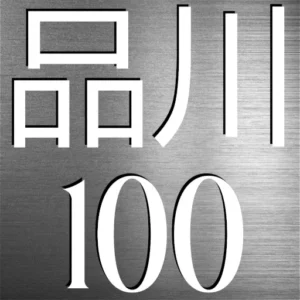What is the Tōkaidō Road?
It’s a historic road, the Tōkaidō (東海道, East Sea Road), running through the location of the former Shinagawa-juku post town.
History of the Tōkaidō
From ancient times, the Tōkaidō was the main route from the capital city of Kyoto eastward to central Honshu. The Tōkaidō became even more important during the Tokugawa (Edo) period (1603–1867), as it connected Edo (modern-day Tokyo), the capital city of the Tokugawa shogunate, with western Honshu.
It was the most important of the Five Routes of the Edo period in Japan as was the easiest that connected Kyoto to Edo. The entire route was about 515 km (320 miles) long and ran mostly along the Pacific (i.e., southern) coast of the island of Honshu.
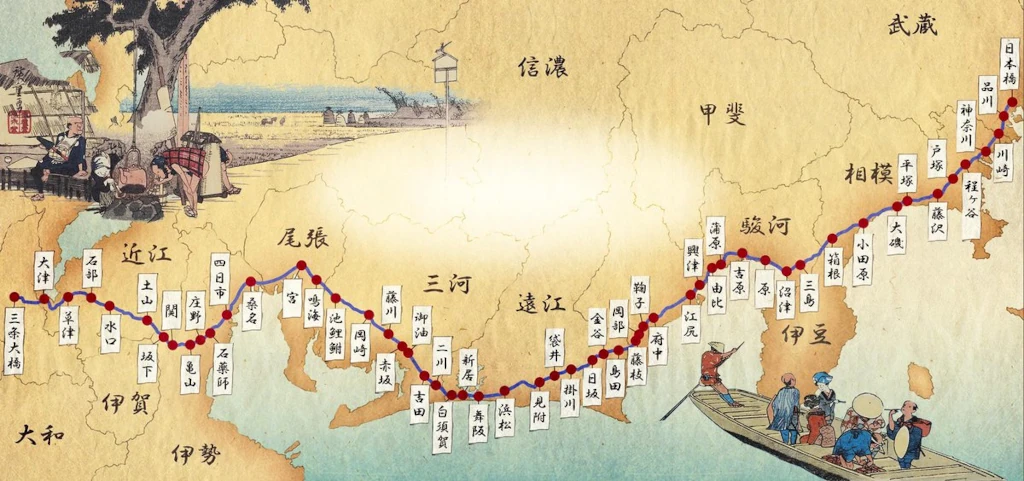
Edo Period: The Shogunate and the Alternate Attendance System
The Tokugawa shogunate (established 1603) later imposed several rules on the Daimyo (feudal lords) to maintain control and stability during the Edo period. The main rule significant to the Tōkaidō in Shinagawa was the Sankin-kōtai (参勤交代) (Alternate Attendance System) . This policy required the Daimyo, potential enemies around Japan, to spend alternating periods in their domains and in Edo. This aimed to keep the Daimyo under the shogunate’s control by requiring them to maintain large residences in Edo and live there for several months every other year. Consequently the Daimyo travelled in large processions of between a few hundred to over a thousand attendants; samurai, officials, servants and porters.
Juku: Post Station Towns
Along the Tōkaidō were 53 post-station towns whose inns and vendors provided lodging, refreshment and gifts for these travelers. Shinagawa-juku was the nearest of these post-station towns outside of Edo. As such when people left or entered Edo they had to pass through it.
Shinagawa-juku had three sections: Kita-Shinagawa-juku in the north, and Minami-Shinagawa-juku in the south with the Meguro River serving as a border between the two, and in 1722, the arrival of Kachi-shinshuku station on the north side of Kita-Shinagawa-juku.
Kita-Shinagawa-juku derives its name from the fact that it only provided porters, and not horses, for carrying luggage.
The Current Tōkaidō
Today the Old Tōkaidō has a number of shrines and temples and sites of historical interest. Note that the slope on the east side of the street used to meet at the shore of Tokyo bay. The buildings beyond the water to the east were all built on reclaimed land.
This and the other Post Station Towns were illustrated in Hiroshige’s ukiyo-e series “53 Stations of The Tōkaidō” .
The Gokaidō (五街道) refers to the five centrally administered routes that connected Edo (now Tokyo) with the outer provinces during the Edo period (1603–1868). Here are the five routes:
- Tōkaidō (東海道): This was the most important route, linking Edo and Kyoto.
- Nakasendō (中山道): Also known as the Central Mountain Route, it was another route connecting Edo and Kyoto.
- Kōshū Kaidō (甲州街道): This route led to the province of Kai.
- Ōshū Kaidō (奥州街道): This route extended to the Mutsu Province.
- Nikkō Kaidō (日光街道): This route led to Nikkō.
All five routes started at Nihonbashi in Edo
🧭 Visitor Information
Address: Near 2-6-17 Kita-Shinagawa, Shinagawa-ku, Tokyo 140-0001
Best time to visit: Weekend mornings for calm or September during the Shinagawa Shukuba Matsuri
Admission: Free
Where is it?
| what3words | ///sizzled.curiosity.economies |
| latitude longitude | 35.35.619994148323464 139.7421005102895 |
| Nearest station(s) | Kitashinagawa Station (Keikyū Line) Shinagawa Station (JR Tōkaidō Line, Yamanote Line, Keikyū Line) |
| Nearest public conveniences | Right behind the sign. |
Show me a sign.
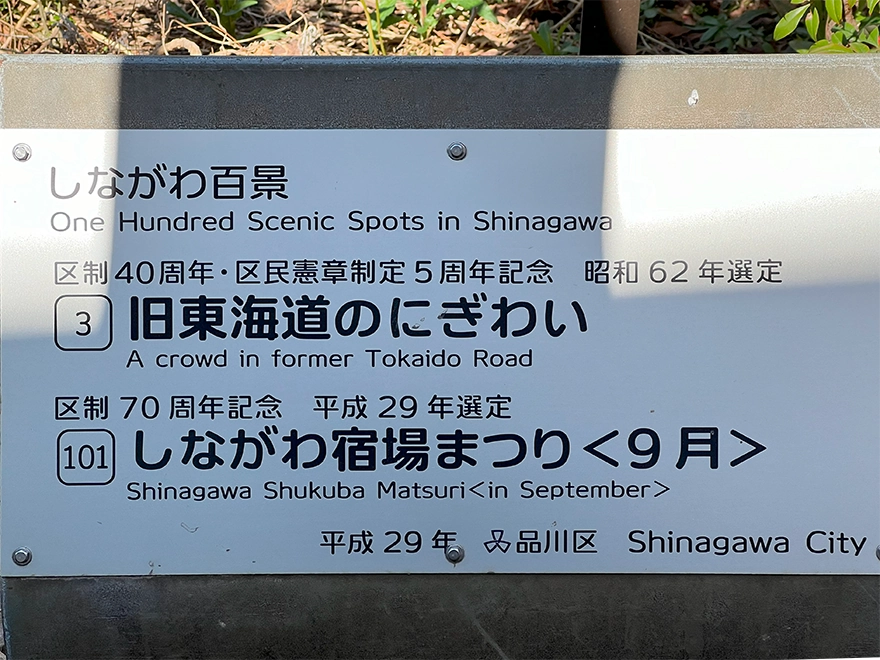
The sign is halfway down the most northern section section of the Kyu Tōkaidō .
Withervee says…
The signs says “a crowd” but to be honest, I’ve never seen a “crowd” there.
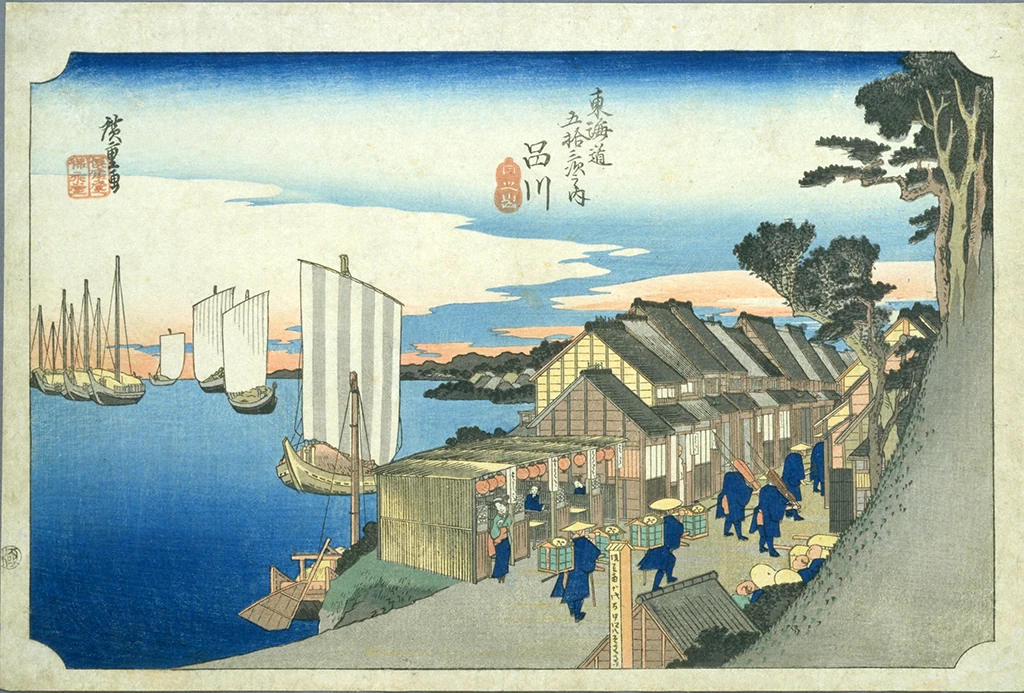
(Not that crowded. But it is daytime)
Regarding the history of the old Tōkaidō and the Shinagawa Post Town, tourist guide books may tell you, bashfully, “some lodges hired women to welcome guests”. According to author Paul Whaley:
Within walking distance of the brothels of Shinagawa was the enormous seminary at Zojoji in Shiba, where three thousand novices and more were studying for the priesthood. In an age notable for its religious laxity, it is unlikely that many of the novices were content to remain celibate, or faithful to the embrace of a fellow monk. So to Shinagawa they went.
…other patrons of the inns of Shinagawa were the samurai, many of whom came from the residence in Mita of the great lord of Satsuma.
There was another Satsuma residence nearer still, in Takanawa, and other powerful lords from Kyushu like Arima and Hosokawa had mansions in the south of the city, near Shinagawa and at the head of the road back home.In the early part of the Edo period, the authorities had tried to restrict the activities of the waitresses of Shinagawa’s inns to serving food and drink. But they met with little success. In 1718 they decreed that each inn was to be allowed two meshimori onna, “rice-serving girls,” a quaint euphemism for the women who served a lot more than just rice…
In 1764 it was decided that the inns of Shinagawa were to be allowed five rice-servers each. And by 1843, when the authorities once again decided to put a stop to frivolity and idle pleasure, either the number of inns had risen drastically beyond the theoretical maximum of ninety-three or each inn had many more than five rice-servers. How else explain that the total number of rice-servers had reached 1,358?
Tokyo Now and Then, Paul Whaley 1984
So it was the busiest post town on the busiest of the Gokaidō and it was quite a bawdy place. A red-light district frequented by samurai and monks.
Representation in Art and Media
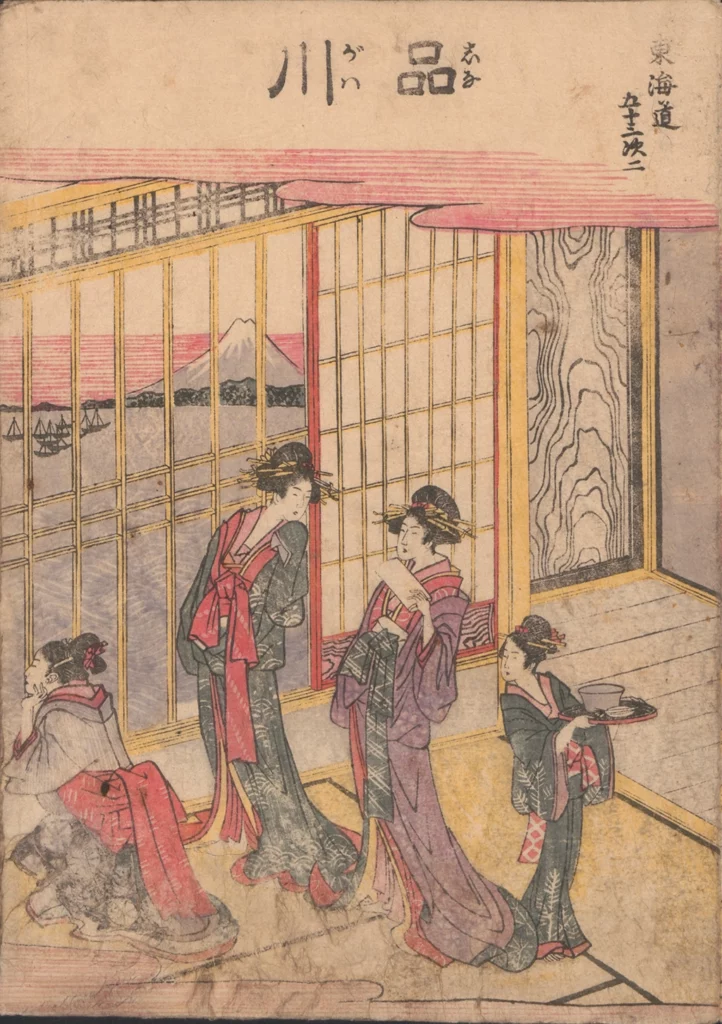
Katsushika Hokusai – Fifty-three Stations on the Tōkaidō Road – Shinagawa
As far as media is concerned notably Shinagawa-juku features in the 1957 film Sun in the Last Days of the Shogunate (幕末太陽傳 – Bakumatsu Taiyoden). Set in 1862, 6 years before the Meiji restoration, it is set in a brothel. It’s a comedy movie but it does give a glimpse of the history of the area. Similarly the comic novel Tōkaidōchū Hizakurige by Jippensha Ikku (十返舎一九, 1765–1831) and English translation of which is Shanks’ Mare; a comic novel of travel & ribaldry. Characters Yaji and Kita travel from station to station along the Tōkaidō travel predominantly interested in food, sake, and women.
Kyu-Tōkaidō – The Old Tōkaidō Road Today
Much of the road today looks just like many any other small streets in Tokyo. But it does have a few tourist attractions and sites to go along with the convenience stores and supermarkets.
It’s likely to attract more tourists than many of the other of the 100 Scenes. There are plenty of temples and shrines nearby. Many of them on the 100 Scenes list. There are a number of paid walking tours of this are in different languages. I went on one in 2011 organised as a muliticultural exchange offered by the Shinagawa City Council. It was free but offered to people who live, work, or go to school in Shinagawa City.
The public conveniences look well maintained.
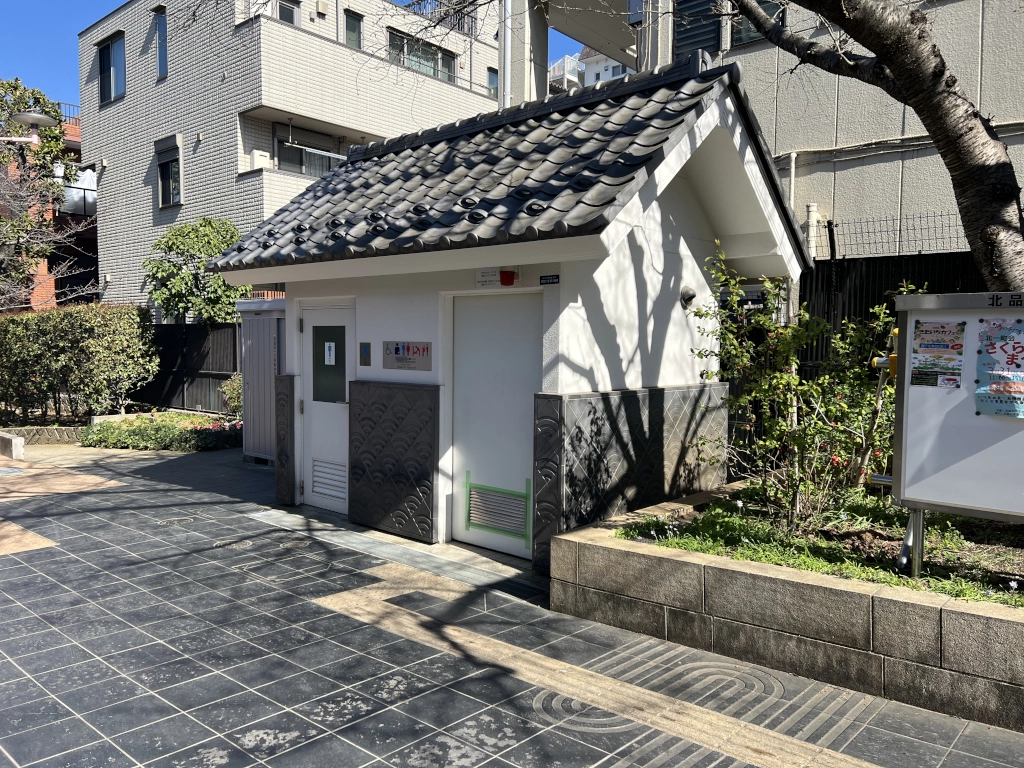
Mondōgashi no ishibumi – Question and Answer Riverside Monument
This monument appears close to the north of the Tōkaidō. Mondōgashi is the name of a wharf that once existed on the coast of Kitashinagawa. It marks the point where the third shogun Tokugawa Iemitsu and monk Takuan had a a well-known Zen dialogue.
This dialogue took place when Iemitsu visited the Tokai-ji temple Iemitsu asked Takuan, “Why is the Tokai-ji (Eastern Sea Temple) so close to the sea?”. In response, Takuan replied, “It’s like saying ‘small army’ even when leading a large army”.
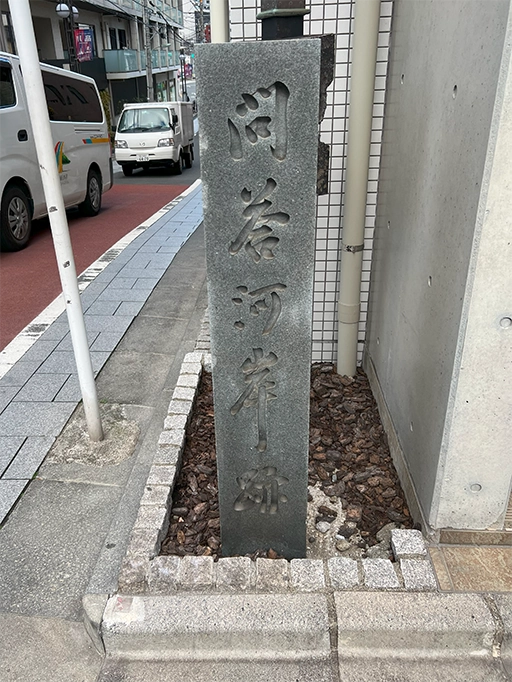
Err… What?
This doesn’t make much sense in English because it’s Japanese wordplay – puns if you like. The word for ‘near’ is ‘近い’ (chikai), and the word for ‘far’ is ‘遠い’ (tooi). The temple’s name, ‘東海寺’ (Tokai-ji), can be broken down into ‘東’ (east), ‘海’ (sea), and ‘寺’ (temple). So, verbally Tokai-ji could be interpreted as ‘Eastern Sea Temple’ or ‘Far Sea Temple’. However, the temple is actually near the sea, which contradicts its name if interpreted as ‘Far Sea Temple’.
When Iemitsu asked why the temple named ‘Far Sea Temple’ is so close to the sea, Takuan responded with another pun. He said, “It’s like saying ‘small army’ even when leading a large army”. In Japanese, ‘大軍’ (taigun) means ‘large army’, and ‘将軍’ (shogun) means ‘general’ but can also be interpreted as ‘small army’ because ‘将’ (sho) sounds like ‘小’ (small). So, Takuan’s response is a pun because it plays on the words ‘大軍’ (large army) and ‘将軍’ (small army).
And…?
This dialogue is a classic example of Zen teachings, where the answer to a question is not a direct explanation, but a statement that provokes deeper thought and understanding. The puns in the dialogue add a layer of humor and wit to these teachings. They also highlight the Zen principle of looking beyond appearances and understanding the essence of things. The name of the temple and its proximity to the sea, or the size of an army and its name, might suggest one thing, but the reality could be different. This teaches us to not make assumptions based solely on names or superficial observations.
But is it Zen or is it Manzai (漫才)1?
- Manzai (漫才) – Japanese comedy double act. ↩︎
Site Character
- Lifestyle 生活 (Seikatsu): ✔️
- Historical Significance 歴史 (Rekishi): ✔️
- Atmosphere/Natural Features 風土 (Fūdo): ✔️
Who in their right mind would vote for this?
- Period drama fans
- History walkers
- Merchant ancestry buffs
- Festivalgoers
- Japan-rail pass tourists

